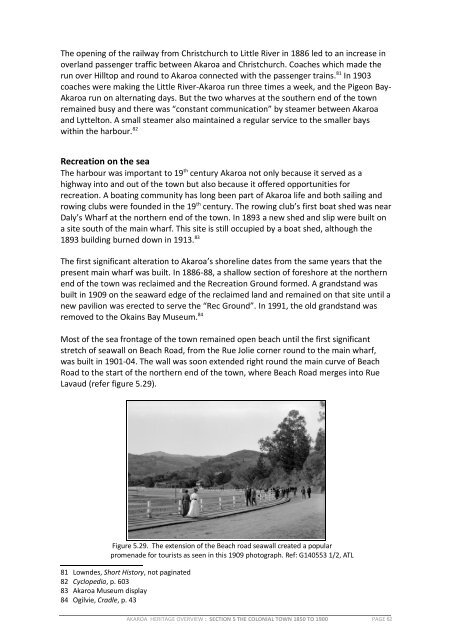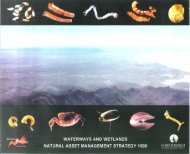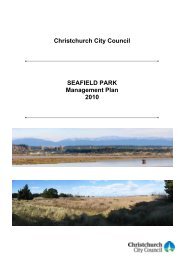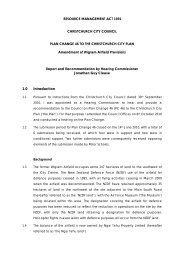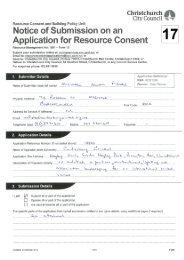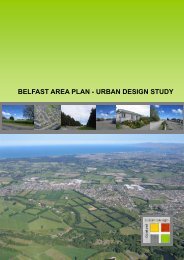Akaroa Historical Overview - Christchurch City Council
Akaroa Historical Overview - Christchurch City Council
Akaroa Historical Overview - Christchurch City Council
You also want an ePaper? Increase the reach of your titles
YUMPU automatically turns print PDFs into web optimized ePapers that Google loves.
The opening of the railway from <strong>Christchurch</strong> to Little River in 1886 led to an increase in<br />
overland passenger traffic between <strong>Akaroa</strong> and <strong>Christchurch</strong>. Coaches which made the<br />
run over Hilltop and round to <strong>Akaroa</strong> connected with the passenger trains. 81 In 1903<br />
coaches were making the Little River-<strong>Akaroa</strong> run three times a week, and the Pigeon Bay-<br />
<strong>Akaroa</strong> run on alternating days. But the two wharves at the southern end of the town<br />
remained busy and there was “constant communication” by steamer between <strong>Akaroa</strong><br />
and Lyttelton. A small steamer also maintained a regular service to the smaller bays<br />
within the harbour. 82<br />
Recreation on the sea<br />
The harbour was important to 19 th century <strong>Akaroa</strong> not only because it served as a<br />
highway into and out of the town but also because it offered opportunities for<br />
recreation. A boating community has long been part of <strong>Akaroa</strong> life and both sailing and<br />
rowing clubs were founded in the 19 th century. The rowing club’s first boat shed was near<br />
Daly’s Wharf at the northern end of the town. In 1893 a new shed and slip were built on<br />
a site south of the main wharf. This site is still occupied by a boat shed, although the<br />
1893 building burned down in 1913. 83<br />
The first significant alteration to <strong>Akaroa</strong>’s shoreline dates from the same years that the<br />
present main wharf was built. In 1886-88, a shallow section of foreshore at the northern<br />
end of the town was reclaimed and the Recreation Ground formed. A grandstand was<br />
built in 1909 on the seaward edge of the reclaimed land and remained on that site until a<br />
new pavilion was erected to serve the “Rec Ground”. In 1991, the old grandstand was<br />
removed to the Okains Bay Museum. 84<br />
Most of the sea frontage of the town remained open beach until the first significant<br />
stretch of seawall on Beach Road, from the Rue Jolie corner round to the main wharf,<br />
was built in 1901-04. The wall was soon extended right round the main curve of Beach<br />
Road to the start of the northern end of the town, where Beach Road merges into Rue<br />
Lavaud (refer figure 5.29).<br />
Figure 5.29. The extension of the Beach road seawall created a popular<br />
promenade for tourists as seen in this 1909 photograph. Ref: G140553 1/2, ATL<br />
81 Lowndes, Short History, not paginated<br />
82 Cyclopedia, p. 603<br />
83 <strong>Akaroa</strong> Museum display<br />
84 Ogilvie, Cradle, p. 43<br />
AKAROA HERITAGE OVERVIEW : SECTION 5 THE COLONIAL TOWN 1850 TO 1900 PAGE 62


